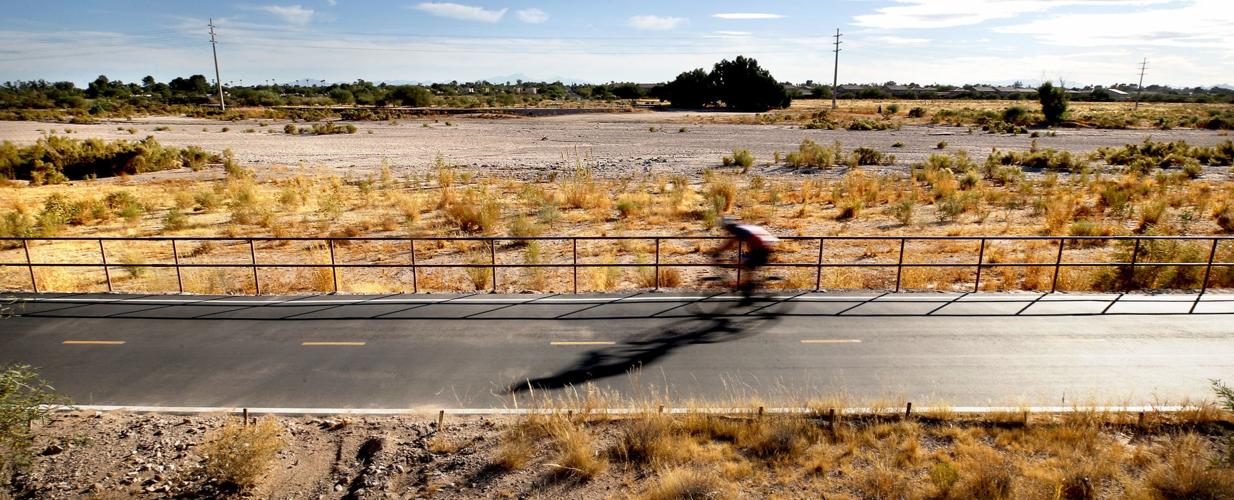To lower the risk of serious flooding, Pima County officials removed thousands of cubic yards of sediment from a section of the Rillito River between North Alvernon Way and North Craycroft Road last year.
Unbeknownst to flood- control officials, a popular birding site that plays seasonal host to a number of sparrow species, including rare, clay-colored sparrows and Dickcissels, was in the middle of the project. Some neighbors, bird enthusiasts and the local chapter of the Audubon Society cried foul.
“It was really unfortunate the way it happened,” chapter Executive Director Karen Fogas said.
But in response to the outcry, Pima County worked with the Audubon Society to improve its restoration plan, the fruits of which are already appearing near the northern extreme of Columbus Road, just south of the Rillito.
Jennifer Becker, the flood-control department’s principal hydrologist, said Audubon employees helped improve the irrigation plan for the restoration, as well as offering suggestions for plant species suitable for sparrow habitat. The county’s native plant nursery also helped out.
“Tucson Audubon was great in helping to revise and improve our already very good native seed mix,” she said.
The effort also got some volunteer help this fall from members of the Creekside Homeowners Association, who helped plant several tree species watered by a drip line with reclaimed wastewater.
Though just over a year from the sediment-removal project, Jonathan Horst, Audubon’s director of conservation and restoration, said, “Right now, it looks surprisingly good from my standpoint.”
Depending on rainfall, Horst said it could be anywhere from five to 10 years before the sparrow habitat is comparable to what was there before, but added: “It’s on the trajectory to returning to that.”
Though there aren’t as many birds as there were before, on a single work day of planting and pulling weeds in September, Horst said they saw several dozen bird species, including sparrows. No clay-colored sparrows or Dickcissels, which are some of the biggest draws, were among them, but their season was still a little ways out.
“It will be really interesting to know whether this winter if anybody finds any of those super rarities,” he added.
As a result of the collaboration, Becker also said she hopes that the area, known informally as the weed patch, takes on a name it bore in the past: the sparrow patch.
Beyond work at the weed — or sparrow — patch, the Audubon chapter provided the flood-control department with location data for other critical bird habitat. Becker said data is now included as a layer in its mapping software, allowing the department to avoid a repeat of last year.
“This theoretically won’t happen again, as long as we have project managers that can check that,” Becker said.





